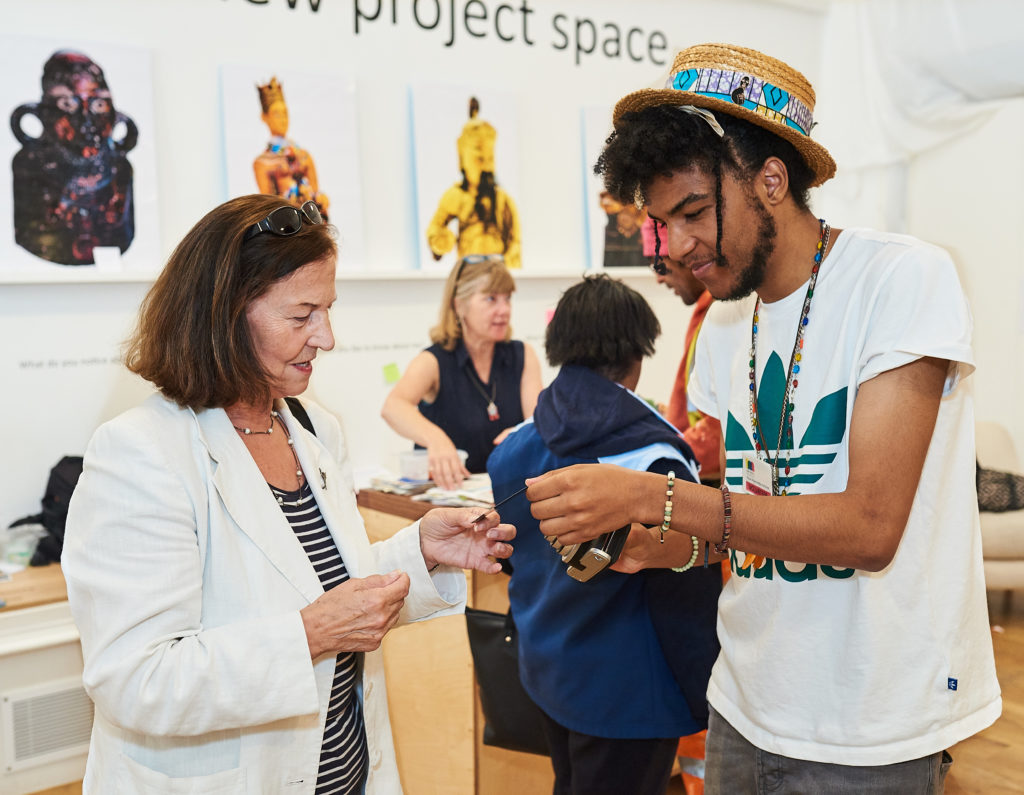Cultural Democracy in Practice – Derby Museums
Derby Museums
“When applying a co-production approach the results are so much richer”. Head of Co-production Display Andrea Hadley-Johnson describes the vision of Derby Museum: where cultural democracy is the norm, the innate way to work. A shift to cultural democracy was underway when Tony Butler became director in 2014, and this approach was embedded with the team restructured to deliver co-production. Tony Butler makes clear connections between ideology and practical delivery: the museum’s approach is centred on social capital, with experiences, skills and learning flowing between Derby Museum and the city’s population.
Derby Museum uses co-production to connect to the city, in an approach deeper and more profound than ‘community engagement’ – delivering on what the community needs is at the heart of co-production, but this doesn’t need to be a purely altruistic aim. Tony emphasises the pragmatism of cultural democracy, as a highly effective method for recruiting a committed base of supporters, customers and advocates, “it can be good business”. Citing a significant study by Bluegrass, examining the relationship between leisure and culture spending power, Tony identified a societal segment who are currently Derby Museum ‘non-users’ who could convert to participants who also have disposable income. “A significant part of Derby’s population have discretionary household budget available for leisure, we need to convince them to spend it here”.
But the driver for co-production is not just a business case but a social one too. Starting outside of the museum in order to diversify what happens inside of it is important in developing balanced relationships and relevant content. Andrea mentions that, “as we stood on the threshold of the barbers’ shop, a room full of men, with everyone speaking a language that I didn’t recognise, I wondered whether we needed to behave in a certain way. What if we weren’t able to understand or be understood? I realised this is how it feels for some people standing on the threshold of a museum.” She uses this insight as an acid test for new ideas, how can Derby Museums be relevant, not intimidating? A crucial first step in forming connections is to take collections out of the museums and into people’s daily lives. Derby Museums takes its collections into pubs, working men’s clubs, barbers, knitting circles, schools and the streets to stimulate discussions about history and society. Combs and toys spark conversations; collections are used to respond to world events. Giving Derby Museum’s collections new contexts and fresh relevance sparks unexpected connections; inspire creativity and prompt trips, often for the first time, to the museum.
It’s the little details that reveal Derby Museum’s Natural History Galleries were created differently. A child’s drawing of a butterfly, lovingly pinned amongst the lepidoptery collection, a stuffed fox at child’s height to facilitate stroking, quirky individual details on the display cabinets. The exhibition is a neat embodiment of Derby’s approach, made with its volunteers and participants through workshops, co-production events and consultation. Andrea describes Derby’s approach to co-production as ‘representative democracy’. It’s a close working relationship between participant and practitioner, a process neither wholly top-down nor bottom-up. Derby’s model may be unusual, but its curation, interpretation and collections management are exceptional by the standards of a local or national museum. Derby confronts collections with challenging provenance (such as those gained through empire) with confidence and ingenuity, taking an approach of ‘empathy, not sympathy’ in connecting difficult objects with relevant audiences.
“It’s a tangle, not a linear process, you need to know when to detangle and move to an outcome, no-one individual, group or voice dictates the final outcome’. Andrea explains the development of Derby Museum’s new World Culture Galleries, created through co-produced curation and craft, with a large cohort of volunteer curators and makers deeply embedded within the creation of the new gallery. An organic approach is taken to interpretation, with co-producers inhabiting the galleries as visitors first start interacting with the collections and installations and observing responses. Interpretation developed in response to this intimate observation is more likely to deliver Andrea’s philosophy underpinned by the question, ‘will it stimulate or squash curiosity?’.
The Museum of Making, a new £16.5 million, HLF-funded capital project represents the truest embodiment of Derby’s approach, a landmark new building, founded on co-production. 90,000 volunteer hours have gone into the building’s concept design alone and an iterative, prototyping approach has disrupted and challenged the traditional RIBA development process.
Derby Museum’s work challenges conventional stereotypes on cultural institutions receiving public funding as a ‘subsidy’ and is part of a growing movement of cultural institutions gaining quantitative and qualitative analysis on their impact on society. A legacy of skills, empowerment, personal development and networks form a tangible return on social investment and Derby Museums demonstrably makes a positive contribution to the economy and society of the city.
What is the outcome? Reappraisal of a 140 year old cultural institution as a bridger of social capital, fostering relationships with audience rather than transactions. This approach has led the museum to think differently about measuring public benefit, for example using models such as Social Return On Investment (SROI) to measure impact. It’s also begun to turn social capital into financial capital both in terms of a large increase in support in kind for projects and actual onsite donations.

